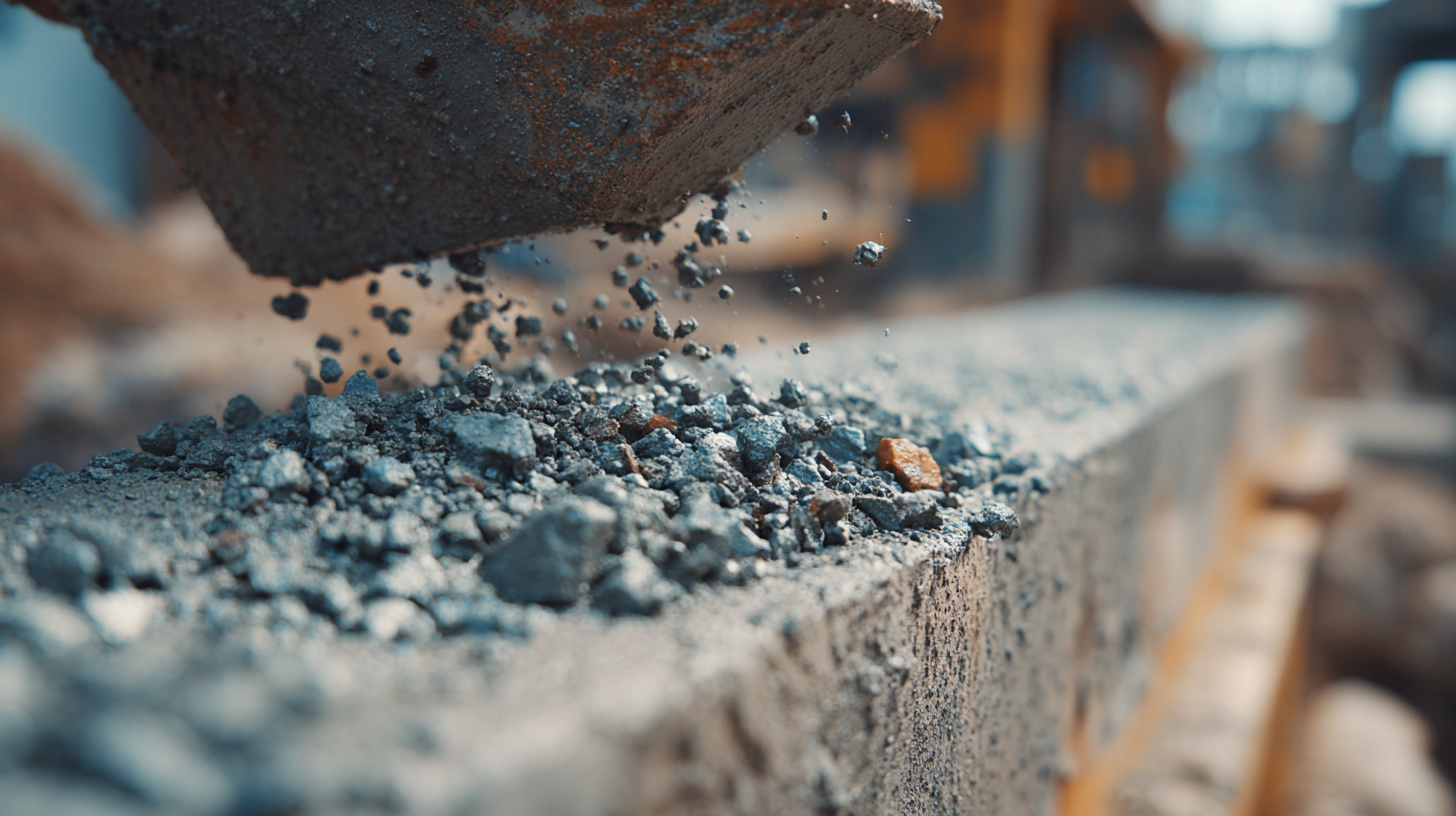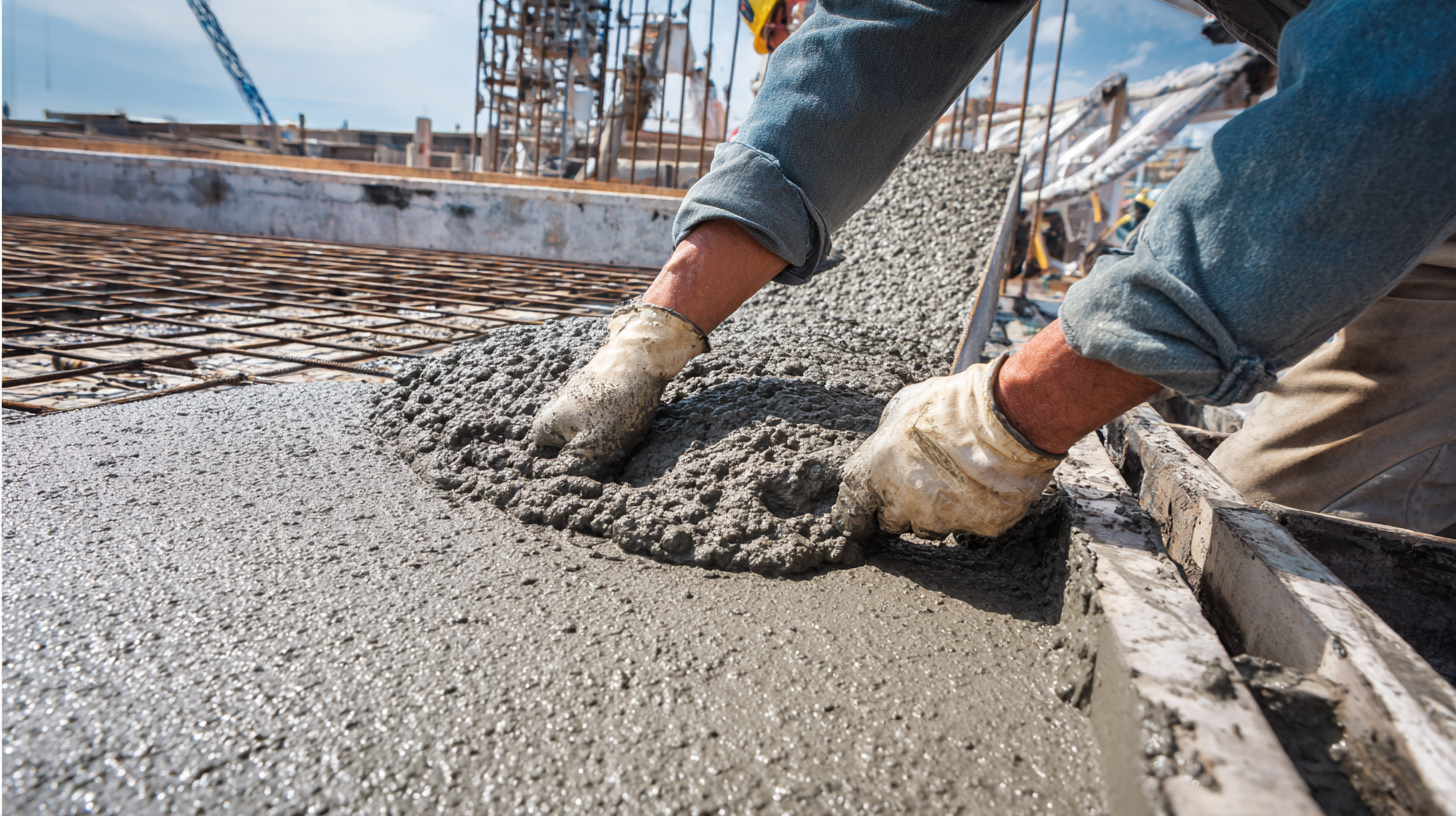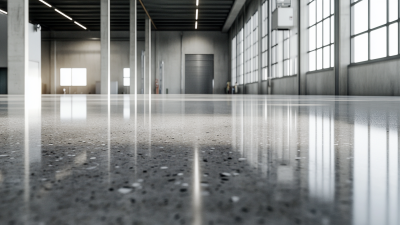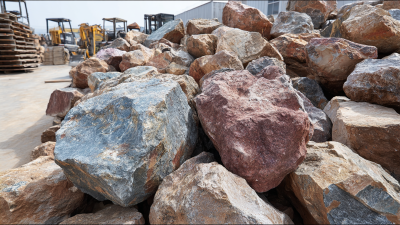Exploring Innovative Concrete Specialties: How Modern Techniques Transform Construction
In the rapidly evolving world of construction, Concrete Specialties have emerged as a focal point for innovation and efficiency. As modern techniques and technologies reshape the landscape of building materials, the incorporation of advanced concrete solutions is proving to be a game-changer. This article delves into the transformative potential of these Concrete Specialties, examining how they not only enhance structural integrity but also improve sustainability and aesthetic appeal.

From high-performance mixes that cater to specific environmental conditions to smart concrete solutions that integrate sensors for real-time monitoring, the possibilities are vast. As we explore these innovations, we will uncover practical tips and insights for construction professionals looking to leverage these advancements, ensuring that they remain at the forefront of industry trends and best practices.
The Evolution of Concrete: From Traditional Methods to Modern Innovations
The evolution of concrete technology has undergone a remarkable transformation from traditional methods to modern innovations. Historically, concrete was often mixed by hand, relying heavily on local materials and labor-intensive practices. According to the National Ready Mixed Concrete Association (NRMCA), the concrete industry has made significant strides, with a production of over 4 billion cubic yards in the U.S. alone as of 2021, reflecting its crucial role in infrastructure development.
Modern techniques such as high-performance concrete (HPC) and self-consolidating concrete (SCC) are redefining the standards in construction. HPC, which boasts improved durability and strength, allows for the construction of slender, aesthetically pleasing structures that were previously unattainable. The Global Market Insights report indicates that the demand for HPC is expected to grow at a compound annual growth rate (CAGR) of over 7% from 2022 to 2028. Additionally, SCC simplifies the pouring process, eliminating the need for vibration, which not only saves time but also enhances worksite safety. These innovations not only demonstrate the industry’s adaptability but also promise a more sustainable and efficient future in construction.
Innovative Concrete Techniques Over Time
Sustainable Practices in Concrete Production and Their Impact on the Environment
The concrete industry is witnessing a significant transformation driven by innovative techniques and sustainable practices. As the global precast concrete market is projected to reach a value of $151.49 billion in 2024, increasing to $246.07 billion by 2032, it highlights the growing emphasis on efficiency and eco-friendliness in construction. Companies are increasingly focusing on sustainable production methods, including the introduction of green cement and modular concrete solutions, which aim to minimize environmental impact while meeting rising urban demands.

Furthermore, the expansion of the concrete additives market reflects the industry's shift toward enhanced performance and sustainability, with an expected growth from $21.09 billion in 2023 to $42.67 billion by 2031. This growth is fueled by rapid urbanization and the necessity for innovative building materials that not only support structural integrity but also address environmental concerns. Notably, research initiatives, such as those conducted by teams at universities and international research institutes, are exploring resource recycling and efficiency in sand and gravel utilization, further indicating a commitment to sustainable practices within the global concrete sector.
High-Performance Concrete: Enhancing Durability and Strength in Construction
High-performance concrete (HPC) is revolutionizing the construction industry by significantly enhancing the durability and strength of structures. This innovative material incorporates advanced additives and technology that not only improve its resistance to environmental factors but also extend the lifespan of buildings and infrastructure. Designed to withstand extreme weather conditions and heavy loads, HPC is becoming the go-to choice for architects and engineers focused on sustainability and longevity.
Tips for utilizing high-performance concrete effectively include selecting the right mix design tailored to specific project requirements. Consider incorporating supplementary cementitious materials such as fly ash or silica fume to boost strength and reduce permeability. Additionally, employing proper curing techniques is crucial; maintaining adequate moisture levels during the curing process can lead to a more durable finish.
Another important tip is to assess the potential impact of environmental factors on your concrete. Implementing protective measures, such as sealants, can enhance resistance to chemical attacks and minimize maintenance costs over time. Furthermore, explore the use of fiber reinforcement to improve tensile strength and reduce cracking, ensuring that your concrete structures stand the test of time.
Smart Concrete Technologies: Incorporating Sensors for Real-Time Monitoring
The integration of smart concrete technologies is paving the way for a transformative era in construction. By harnessing sensors and real-time monitoring systems, the industry can significantly enhance the precision and efficiency of concrete usage. One of the most innovative advancements includes non-invasive, self-calibrating sensors that monitor concrete quality during transit. These technologies enable real-time data collection, allowing for immediate adjustments and ensuring adherence to quality standards throughout the construction process.

Incorporating artificial intelligence into the concrete production process further optimizes workflows. With predictive analytics and data-driven decision-making, construction firms can address issues before they escalate, leading to improved project timelines and reduced waste. Moreover, research into self-sensing materials offers the potential for concrete structures that can monitor their own health, providing valuable insights long after the initial build. This goes hand in hand with ongoing efforts to tackle environmental challenges, making smart concrete not only a leap in innovation but also a step toward sustainable construction practices.
The Future of Urban Infrastructure: How Innovative Concrete Shapes Smart Cities
Innovative concrete technologies are pivotal in revolutionizing urban infrastructure, playing a crucial role in the development of smart cities. These modern techniques not only enhance the durability and sustainability of structures but also integrate advanced features that promote efficiency. Self-healing concrete, for instance, has emerged as a game changer, capable of repairing its own cracks through the incorporation of microcapsules containing healing agents. This innovation extends the lifespan of urban facilities while significantly reducing maintenance costs, making it an attractive solution for city planners aiming for sustainable growth.
Moreover, the incorporation of smart materials into concrete mixes facilitates the development of responsive structures that can adapt to environmental changes. Sensors embedded within concrete can monitor structural health, detect stress, and provide real-time data to city management systems. This integration helps in predictive maintenance, ensuring safety and optimizing resources. As cities increasingly adopt these groundbreaking technologies, innovative concrete not only shapes the skyline but also lays the groundwork for a more resilient and interconnected urban future.
Exploring Innovative Concrete Specialties: How Modern Techniques Transform Construction
The Future of Urban Infrastructure: How Innovative Concrete Shapes Smart Cities
| Innovation Technique | Application | Benefits | Future Potential |
|---|---|---|---|
| High-Performance Concrete | Skyscrapers, Bridges | Enhanced durability and strength | Sustainability in high-stress environments |
| Self-Healing Concrete | Pavements, Tunnels | Reduces maintenance costs | Longer lifecycle for infrastructure |
| Recycled Aggregate Concrete | Road construction, Foundations | Environmentally friendly, reduces waste | Enhanced circular economy practices |
| 3D Printing with Concrete | Housing, Decorative Structures | Labor cost reduction, design flexibility | Rapid construction for urban housing |
| Ultra-High Performance Concrete (UHPC) | Bridges, Facades | Exceptional durability and aesthetic appeal | Innovations in design and longevity for urban centers |
Related Posts
-

Unlocking Global Opportunities: Leading Manufacturing Plant for Premium Concrete Top Solutions
-

10 Essential Tips for Choosing the Best Concrete Products in 2023
-

5 Best Strategies for Efficient Concrete Delivery Services
-

5 Essential Tips for Sourcing Wholesale Concrete Without Compromising Quality
-

Unlocking Efficiency: How Real-Time Concrete Delivery Tracking Can Transform Your Project Management
-

Unleashing the Power of Chinese Manufacturing in Best Landscaping Rock Solutions
